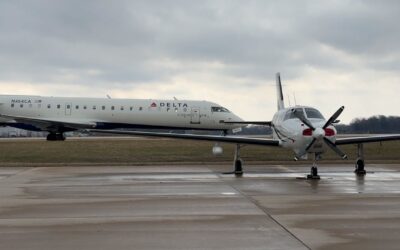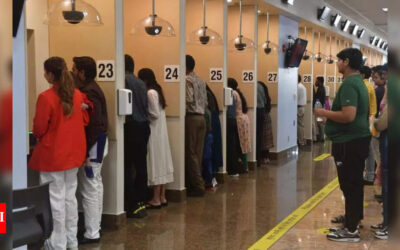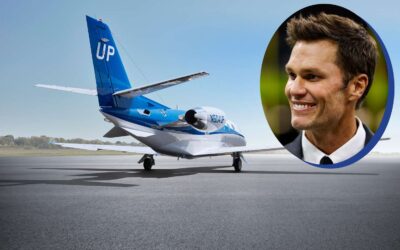While AI is rooted in the company’s technological infrastructure, it will not replace the interaction of humans to humans
The global luxury travel market is seeing a lot of growth as well as the rest of the travel industry. Valued in USD 1.38 billion last year, the industry has not only recovered at pre-pondemic levels, but also projected that it will grow at an annual compound rate of 7.9% from 2024 to 2030.
This growth is accompanied by a change in what luxury travelers are looking for. A recent survey revealed that 68% of luxury travel advisors observed a tendency towards highly personalized experiences: longer vacations, improved privacy and premium services. In essence, luxury travelers now want trips that are as exclusive and luxurious as their destinations.
Vistajet has captured the greatest demand, as well as the changes in the behavior of this demographic group, and is currently expanding in several markets to capitalize on these globe trends.
Founded in 2004, Vistajet directs a fleet of private planes to 207 countries and territories, which covers 96% of the world. Its subscription model offers customers access to the fleet and only pay for the hours that fly through the membership of the Vistajet program, which includes medium and long range aircraft.
We find ourselves with Vistajet’s Crystal Wong, Executive Vice President, Sales of Programs, Apac and Amy Yang, Vice President, Marketing, Apac & ImeaTo talk about how the company is adapting to changes in the regional market, trends and demand in the business aircraft, the importance of the Southeast Asian market and the adoption of artificial intelligence by Southeast Asia.
Q: Could you name some changes in the business aircraft market that have directly influenced customer behavior within its target demographic group?
Glass: There are constantly changes, regardless of or internationally, so we always find a substantial growth potential. It is probably easier for us to return a few years to compare ‘during Covid’ and then the period after Covid, because that caused a significant change in demand and market trends.
First, we have seen more and more airplanes selling their aircraft, flying less on their own planes or starting to change our subscription model. We are becoming an alternative to the property of airplanes.
Another important feature that we can see is for the flying corporations. We have received more and more members of the Corporation, and enjoy our program because our program gives them important commercial advantages; This is commercial value for international cooperations. They can enjoy a constant service of us, and they do not need to pay the property costs, the costs of the assets or any asset rate that goes to their balance. Those are some of the trends that we can see or demand that we can see in the business aircraft market.
Amy: I have a couple of things to add to Crystal points, compared to before Covid, many people have health and safety concerns now. Just to put this in perspective, the investigation shows that flying commercially in an airline has 700 contact points for passengers for each trip. But if it flies in private, the points of contact fall to just 20. These contact points begin from the moment you leave your home, go up to a car and then go to the airport, so turn on.
That is a reason why we see that the trend changes to our business. And another thing I want to expand is to fly privately on commercial tours. Only two weeks ago, it flew on our plane, and we visited three countries and four cities in three days in Africa. That is something you cannot do in a commercial airline. And many of these locations do not have direct connections, so this is only possible when it flies private. That is another remarkable trend.
Q: Vistajet has also expanded in the Asia and Pacific region due to the greatest demand. What is the meaning of this region, especially Southeast Asia?
Glass: It is a very important market for us, sure. We have been in Southeast Asia for 15 years, while our company celebrates turning 20. This is one of our most important insurance markets.
To give it a context, in terms of numbers, for the entire APAC, our total growth of the flight hours year after year in 2023 was 54% and for the flight legs, we had a growth of 73% year after year. We are very proud of of 22%. , also surprising numbers there for our strong presence in Southeast Asia.
We also opened our Singapore office last year. In addition to our Hong Kong office, which has been in the region for years, we open our Singapore office to support some of the regional needs or regional business development activities necessary in Southeast Asia. Every time we have customers in Singapore or in Southeast Asia, or in Malaysia, we can use our existing fleet to serve them. Our planes are also constantly in Asia and Southeast Asia to accommodate demand at any time. For example, our Challenger plane is also part of our expansion plan in Southeast Asia: Challenger 605 and Challenger 350 are inside the region, connecting Singapore, Malaysia, etc.
One of the types of airplanes that I would like to mention is very popular among our customers in the Southeast Asian market is the 7500 Global. So, I think that when people find out, they know that it is a change of game for ultra long -range trips. It will connect Southeast Asian countries such as Singapore, Indonesia and Malaysia with the rest of the world. So, if our clients have great families, they want to fly from Southeast Asia to Europe, North America, then the 7500 global will be one of the best options.

Crystal Wong, Executive Vice President, Sales of Programs, Apac, Vistajet
Q: They say that innovation must be constant to address these great changes in the market, especially in this new panorama …
Glass:I would like to classify innovation in two major categories, which are businesses and service.
We are the first company to not collect one of the most significant costs in the private market for aircraft, which is called the cost of the ferry or repositioning cost. And we not only do it within a region, as we not only do within Europe, which is a more mature private aircraft market, but we also do it here in Asia.
Nor did we charge the costs of ferry in Southeast Asia when it comes to the membership of our program because when we started our business model, we wanted to go to a model of ‘not base of operations’. That means we are not like most private aviation companies whose business model is that your plane must always return to your operations base no matter where the flight is over. We operate a floating fleet model. This is something that nobody did at the time.
To name a few, we have Vistapet. We have adventures in heaven. We have wine in heaven. If they are taking their pets, if they are taking their children or if they have a business meeting with their commercial partners, we can accommodate that. And again, we have all these services in 96% of the world. Then, not only at the regional level or simply outside London, Hong Kong, Singapore … but we do it throughout the world.
Amy: Speaking of innovation, we have developed our well -being programs in addition to our service innovation program. The program adapted to what the client needs, regardless of whether they are pets, children or the client themselves. When they fly, we have a ‘pre-mosca’ nutritionist to help design the menu for them. We also work with our ambassadors to obtain advice on how to elaborate healthy and nutritious menus for them and then in flight, it has all the service programs provided on board and in the destination. We continue innovating programs like this to create a better travel experience for our customers.
Q: How significantly the income from these changing market trends have been impacted?
Glass: Our membership program is our main product, the main way of flying with us, and I would say that a guaranteed way of flying with viewjet because the membership offers availability to our fleets for our customers, regardless of where they are throughout the world.
This membership program is very important to us, and at the same time, very popular among the members of our program and in the market: in 2023 it experienced a two -digit growth of 14% and we are very sure that this two -digit growth It will be achieved again with changing market trends. We trust our infrastructure and connectivity, as in Africa, which is our new approach and one of the markets in which we have seen strong growth. I would say that puts us in a very good position to experience another two -digit growth. In 2024.

Amy Yang, Vice President, Marketing, Apac & Imea, Vistajet
Q: We cannot have a conversation in 2024 without entering AI, so I would like to know how Vistajet is adopting and incorporating new technologies, such as AI generation, in its workflow and processes.
Glass: As you can imagine, to administer and operate more than 300 airplanes, to reserve flights in more than 300 aircraft, so that each flight works efficiently and does not waste unnecessary resources, it is not easy if we do it depending on 100% human beings . Vistajet had already developed its own flight system a long time ago, and we definitely needed support of here.
We definitely invest in our technology when we develop these workflow processes. But one thing that I would like to emphasize, although the question is about AI, each flight in view is different from us because it is also different from our clients, and we would like it to be as personalized as possible. So, although technology, such as AI, will definitely help us optimize the process to make customer flight more efficient, we still need that interaction from humans to humans.
We do not believe that AI can completely replace human interaction to human we have here in view. We are not renouncing any human interaction just to be replaced 100% by AI. But, we will require AI support when it comes to our Vistajet application, our charter platform or the Public Jet Network application. In addition to the application, we believe that human to human interaction remains very important when it comes to customizing service and flights.
Q: With so many changes in the luxury travel market, what is the perspective of Vistajet for the future of this segment and how has changed its vision for the future of luxury trips, if they do?
Glass: The view of Vistajet has always been very consistent and clear. One of the main visions that we have always had is to make the private flight simple. Everything we do is built around this vision of ‘Flying Private Made Simple’. We operate floating fleets, and the members of our subscription program only pay the hours that fly. All these business models we do are trying to fly on our planes as perfect as possible.









